Dave Feder built a kayak and burned it. He also made countless tables, stools, benches, wine-bottle racks, cigar boxes, bowls, and plates and burned them all. And yet he has much more to show for his efforts than a heap of wood ash. He burns his woodworking by wetting it with an electrolytic solution—baking soda and water—and clamping a pair of electrodes to it. With a flip of a switch, electricity flows through the solution-soaked fibers and the heat it generates slowly burns out across the wood. If it sounds dangerous, it is. Dave notes, “I am playing around with 2,000 volts, so inherently the whole process is potentially lethal. It is fun, though.” The burnt wood takes on the same fractal patterns that lightning makes between clouds and earth, but while nature’s lightning is a fleeting bright white flash, Dave’s lightning leaves charcoal-black scars of equal beauty.
The tree-like patterns of electrical discharge were first created in 1777 by Georg Christoph Lichtenberg, a German physicist. He generated static electricity to create a discharge across a glass plate where a fine powder of sulfur and red lead was attracted to the paths of the electrical current. The tree-like patterns are known as Lichtenberg figures.
 Dave Feder
Dave FederDave burned patterns on pieces of Spanish cedar before installing them as inlays on the deck and protecting them with the kayak’s fiberglass sheathing.
Dave does Lichtenberg wood-burning as a hobby and side business—My Twisted Nature. Most of his pieces are live-edge wood slabs for tables and bar countertops, so he does very little joinery and considers himself “a completely novice woodworker. I have not glued two pieces of wood together since middle-school woodshop class in the early ’70s.” But Dave knows electricity. He spent four years in the Navy as an electrician’s mate on a destroyer, and in civilian life he has made a living as an electrical engineer.
Growing up, Dave spent his summers on the Jersey shore and swimming there fostered a love of water. As an adult, he took up recreational kayaking and enjoyed it as a means of getting on the water, but he hadn’t considered building a kayak for himself until he saw a strip-built kayak being paddled on a lake not far from his home. He had no experience building a boat of any kind and doubted that his woodworking skills were equal to the task. A dozen years slipped by since that moment of inspiration, and then the pandemic forced everyone to make changes. For Dave, not all of the changes were for the worse: “After years of daydreaming and never doing anything about it, I found myself with time on my hands during the Covid winter and decided to try and build a boat.”
His first venture into boatbuilding was on a small scale. He bought a kit for a 4′-long model kayak, a hybrid with a stitch-and-glue hull and a stripped deck. That gave Dave a feel for two methods of construction, and he was drawn to the aesthetic possibilities of the strips.
He bought a full-sized kit for the 12′ 8″ Excursion kayak from Newfound Woodworks with full-length strips of red cedar and northern white cedar. For color accents, Dave used brown ash, red oak, mahogany, maple, Spanish cedar, and teak. An attractive arrangement of strips in contrasting colors would have been enough for many builders aiming to personalize a strip-built boat, but the kayak wouldn’t truly be Dave’s unless he burned it.
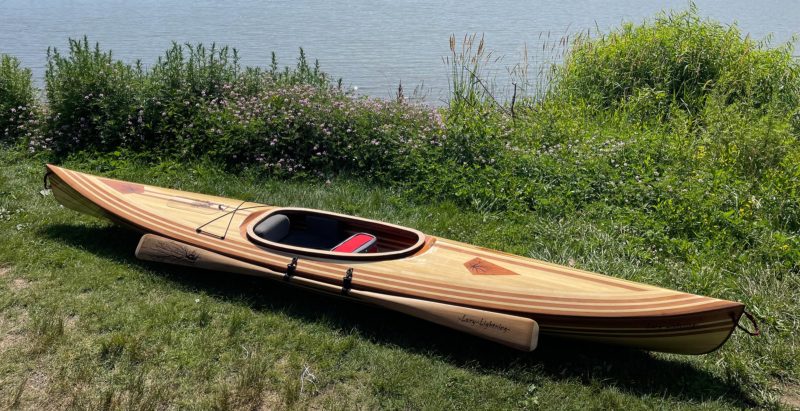 Dave Feder
Dave FederLAZY LIGHTNING is a 12′ 8″ Excursion kayak that Dave Feder built from a Newfound Woodworks kit. Aside from a model strip-built kayak, LAZY LIGHTNING is his first boat.
He wasn’t sure how the Lichtenberg figures might be affected by the glue lines between strips, so he didn’t attempt to make burns on the deck itself—once the juice was applied to the electrodes, there would be no do-overs, so he prepared separate pieces of Spanish cedar for the burns. They had to be oversize because the electricity works outward from both electrodes, creating two figures. When Dave got the patterns he wanted, he cut each out in a smaller piece to inlay in the kayak’s deck. To burn single figures on the kayak’s hatch cover and his Greenland-style paddle he flooded the wood around one electrode with a continuous spray of electrolytic solution to douse its arc and let the other electrode do the work.
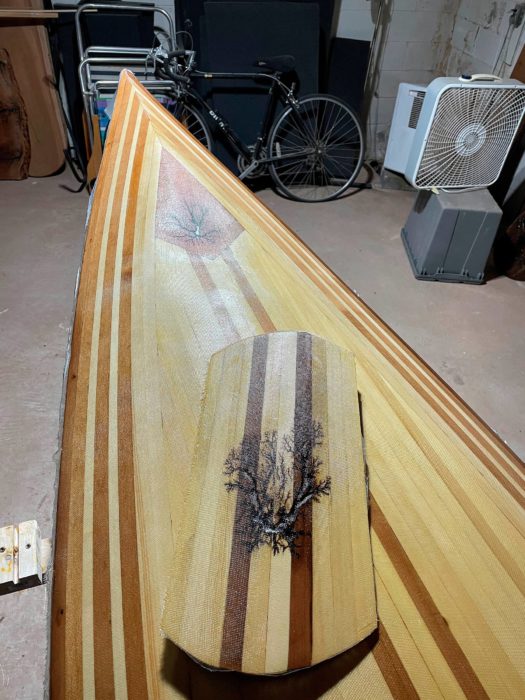 Dave Feder
Dave FederBurning the Lichtenberg pattern on the aft hatch took a special technique to allow only one electrode to create the electrical arc.
Dave built the kayak on his own and worked about 200 hours over nine months before launching it in June 2021. In a nod to his relaxed approach to kayaking, a favorite song by the same name from the ’70s, and the electrical origins of its decorations, he christened the kayak LAZY LIGHTNING. It’s an especially apt name, as electricity is indeed inherently lazy. It doesn’t take the shortest, most direct route between two points, whether as lightning or Lichtenberg figures, but instead finds and follows the far more complex and beautiful path of least resistance.
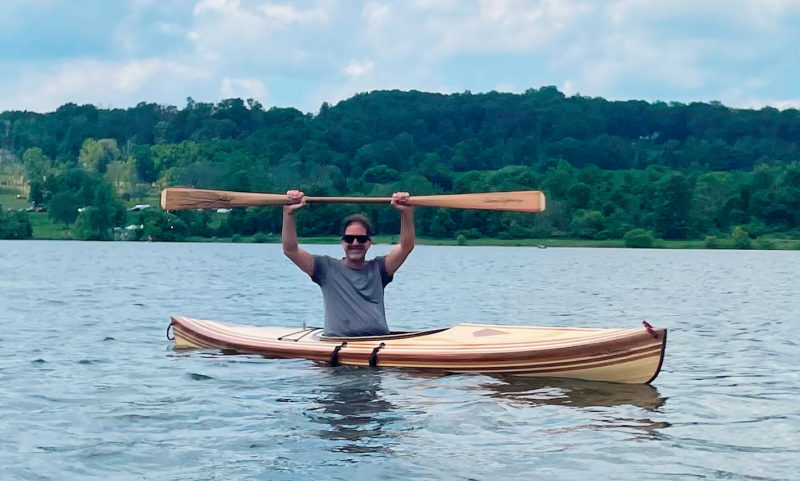 Jenna Bohling
Jenna BohlingThe Greenland-style paddle Dave made has a Lichtenberg pattern on one blade (left) and LAZY LIGHTNING on the other.
Do you have a boat with an interesting story? Please email us. We’d like to hear about it and share it with other Small Boats Magazine readers.
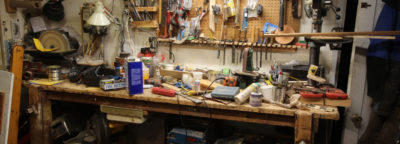
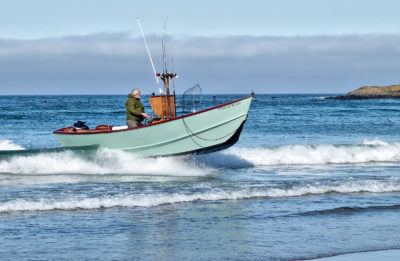

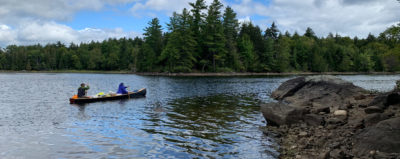

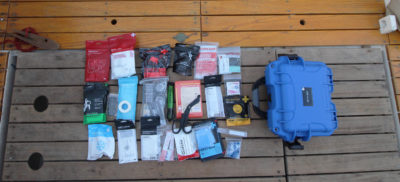
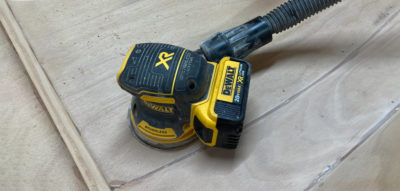
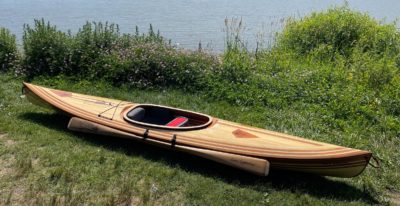
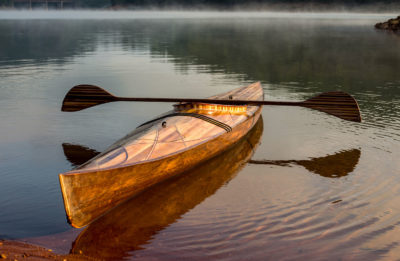
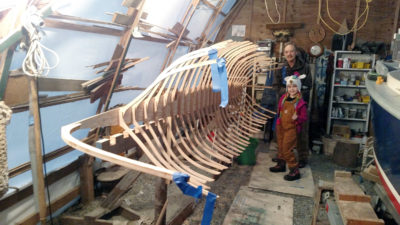
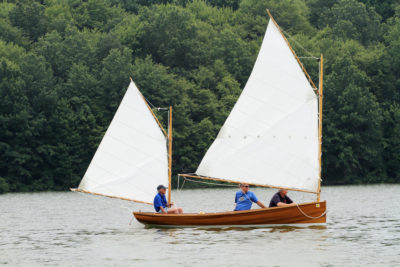
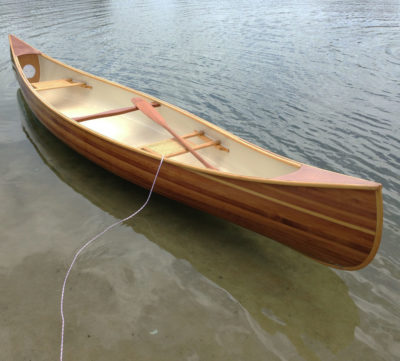
Great looking kayak, Dave!
2000 volts, yikes!!! What do you use to generate the power for the burning process?
Thank you.
The most commonly used power source is a transformer stripped out of a microwave oven. This is a very dangerous hobby. People have died from being electrocuted while trying this process. I strongly advise caution and to not do this unless you have experience working with electricity and follow safety practices.
Dave,
Great Job on the Kayak. I do believe the Lake in the background is Lake Galena. I also like the Safety Reminder for peace of mind.
You have taken Kayaking to the next level!!!!!!
Andy L.
Your Greenland paddle looks a little wider than most. Is it your own design as well? Nice work.
So cool! My father was a high-voltage electrical engineer and he made these in Lucite blocks. He studied lightning. He knew what he was doing.